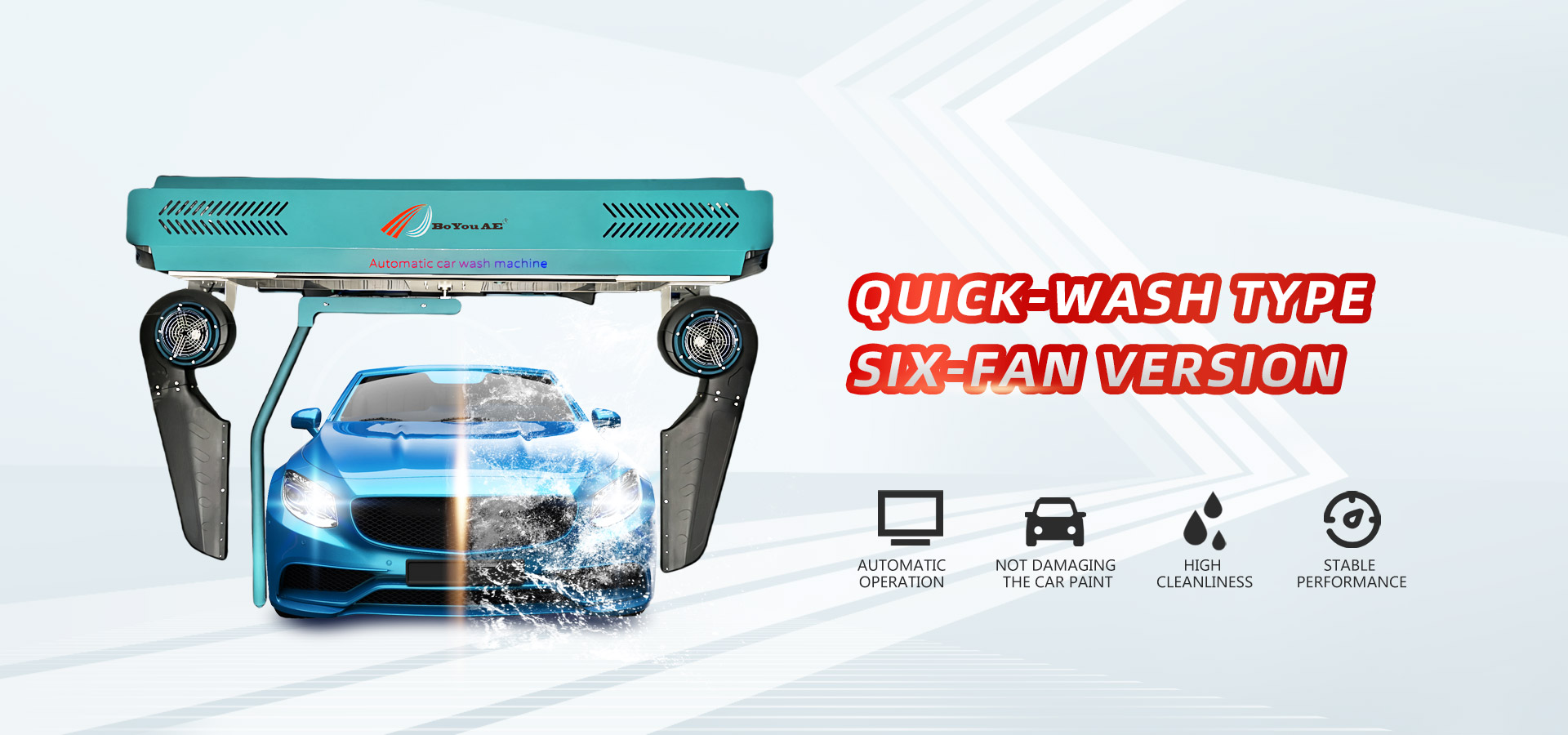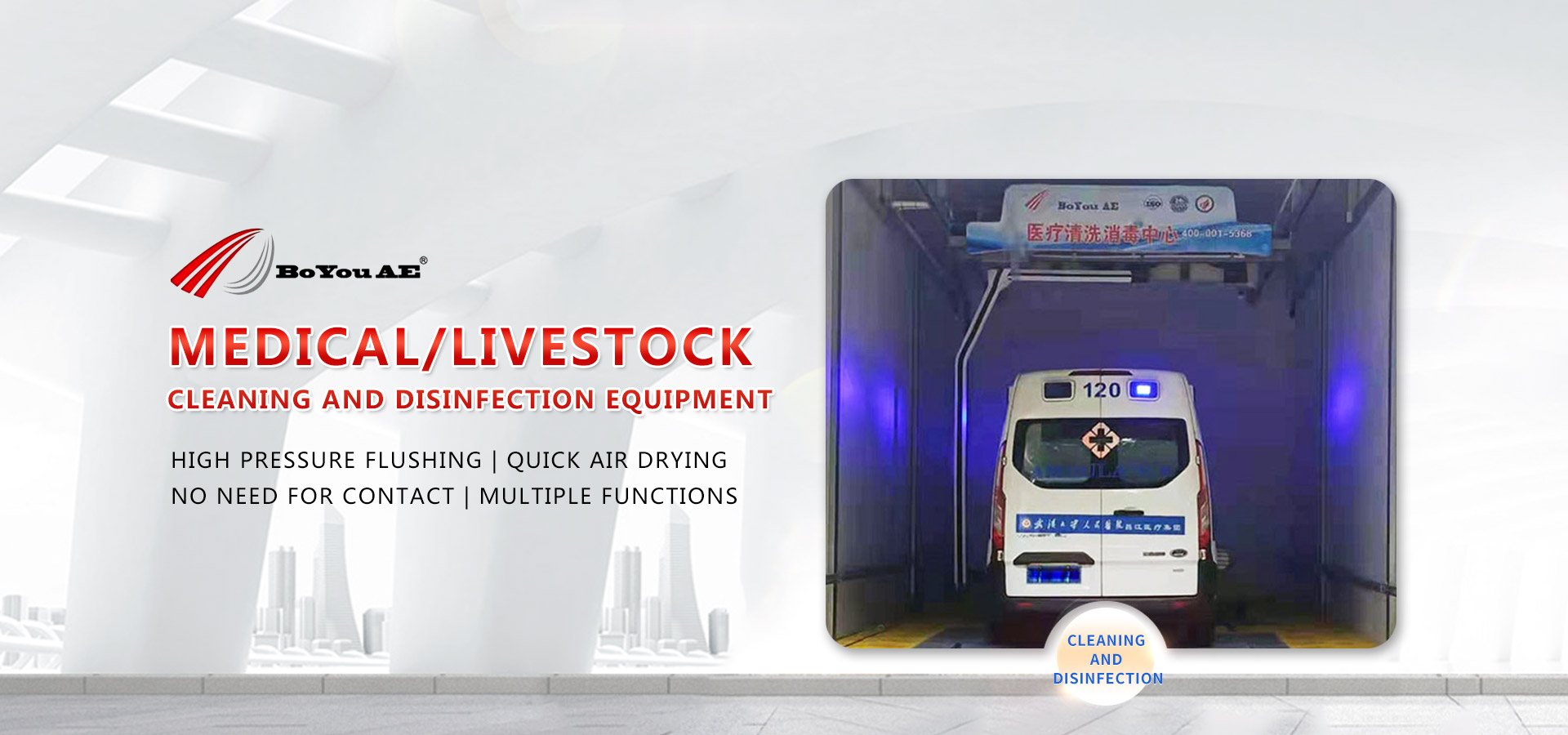Vehicle recognition technology is one of the key technologies of various fully automatic car washing machines, and it is the "eye" of fully automatic car washing machines. Without it, the world of car washing machines would be pitch black, and car washing safety would be difficult to guarantee. To achieve safe car washing, car washing equipment must be equipped with vehicle recognition technology that can accurately identify various vehicle types. Otherwise, no matter how good the car wash machine is, it can only be a "vase" that looks mediocre but not useful. Let's learn about the development process of vehicle recognition technology for fully automatic car washing machines:
Automatic car washing machines have been in China for more than 20 years, and have undergone multiple technological innovations. Each technological innovation is an inheritance and development of the previous generation of products. The vehicle recognition technology of car washing machines has undergone six updates, from proximity sensor detection at the beginning to CCD (i.e. image sensor) technology that is not yet fully popularized today. The Risen fully automatic car washing machine adopts the current fourth generation vehicle recognition technology. The following is a performance and technical comparison of six vehicle recognition technologies:
The first generation was proximity sensor detection technology, which was applied in Japan in the early 1960s and 1970s. It uses proximity sensors to control the trajectory of the top brush, which can only roughly identify the vehicle's appearance and cannot fully automatically identify the vehicle model. This technology belongs to the "latecomer" type, which means that the sensor can only sense the vehicle model after the top brush starts running and comes into contact with the vehicle body, and then adjust the brush's running trajectory, without making a judgment on the vehicle model in advance. Due to the fact that vehicle model information mainly relies on top brush sensing, if the bristles wear severely, it will cause inaccurate vehicle model sensing. Due to outdated technology and numerous security issues, this technology was quickly phased out in Japan. At present, some small manufacturers in China with weaker technical capabilities are still adopting this technology.
The second generation is the current sensor detection technology. The second generation car washing machine can already achieve true automatic car washing, but there are also many defects, such as unstable voltage becoming a major threat to induction accuracy because it relies on the current size to control the movement of the brush. The second generation car washing machine has already used a small number of sensors, but these sensors can only determine the parking position of the vehicle, the total length of the vehicle, etc., and do not have the function of identifying the appearance of the car. Most of the car washing machines seen in the domestic market now belong to the second-generation car washing machines. Although they no longer require complete manual operation, the staff still need to monitor them on the side to avoid accidents.
The third generation is equipped with ultrasonic sensor induction technology. Unlike the previous two generations, the third generation of fully automatic car washing machines takes a unique approach in vehicle recognition technology, identifying vehicle models through ultrasonic induction reflection. This technology can locate the vehicle model in advance and specify the running trajectory of the top brush before it starts working, achieving the goal of identifying the vehicle model proactively and making up for the shortcomings of the previous two generations of technology that were delayed. In terms of vehicle recognition, the third generation technology is also far superior to the previous two generations. However, it should be pointed out that there are still shortcomings in ultrasonic recognition technology. Sound wave transmission and reception are easily affected by external environmental factors such as water vapor, dust, electromagnetic sources, etc. Ultrasonic waves are prone to penetrate windshield glass and cannot be received, resulting in judgment errors.
The fourth and fifth generation vehicle recognition technology adopts photoelectric induction recognition technology and uses CPU instead of PLC for information processing, with faster computation speed and more accurate recognition. The photoelectric sensor can determine the height of different parts of the car body and the position of various equipment before the brush contacts the car body. After calculation, the movement trajectory of the brush is predetermined, truly achieving safe and fast car washing. The principles of the fifth generation technology are basically the same as those of the fourth generation, both using grating or photoelectric sensing technology. There are two main differences: the fifth generation technology increases the number of sensors, making vehicle positioning more accurate; The fifth generation technology integrates multiple recognition methods, such as the comprehensive application of ultrasonic technology and photoelectric induction technology. The fourth and fifth generation technologies are currently mainstream in Japan, and most fully automatic car washing machines produced by Japanese manufacturers currently use the fourth or fifth generation vehicle recognition technology. Qingdao Risen has partnered with Japanese company MK to launch a fully automatic car wash machine using fourth generation vehicle recognition technology for the Chinese market, filling a gap in the domestic market.
The sixth generation CCD scanning detection technology was successfully developed by MK Seiko Co., Ltd., a Japanese car washing machine manufacturer, and has not yet been widely applied.
There are many car series in the Chinese car market, with a wide variety of complex models. This requires the fully automatic car washing machine to be able to accurately identify various complex vehicle models. Otherwise, there will be safety hazards in the operation of the car washing machine. Therefore, when choosing and purchasing a car wash machine, the majority of car wash shop operators must choose a fully automatic car wash machine with technology that can accurately identify various car models.
Automatic car washing machines have been in China for more than 20 years, and have undergone multiple technological innovations. Each technological innovation is an inheritance and development of the previous generation of products. The vehicle recognition technology of car washing machines has undergone six updates, from proximity sensor detection at the beginning to CCD (i.e. image sensor) technology that is not yet fully popularized today. The Risen fully automatic car washing machine adopts the current fourth generation vehicle recognition technology. The following is a performance and technical comparison of six vehicle recognition technologies:
The first generation was proximity sensor detection technology, which was applied in Japan in the early 1960s and 1970s. It uses proximity sensors to control the trajectory of the top brush, which can only roughly identify the vehicle's appearance and cannot fully automatically identify the vehicle model. This technology belongs to the "latecomer" type, which means that the sensor can only sense the vehicle model after the top brush starts running and comes into contact with the vehicle body, and then adjust the brush's running trajectory, without making a judgment on the vehicle model in advance. Due to the fact that vehicle model information mainly relies on top brush sensing, if the bristles wear severely, it will cause inaccurate vehicle model sensing. Due to outdated technology and numerous security issues, this technology was quickly phased out in Japan. At present, some small manufacturers in China with weaker technical capabilities are still adopting this technology.
The second generation is the current sensor detection technology. The second generation car washing machine can already achieve true automatic car washing, but there are also many defects, such as unstable voltage becoming a major threat to induction accuracy because it relies on the current size to control the movement of the brush. The second generation car washing machine has already used a small number of sensors, but these sensors can only determine the parking position of the vehicle, the total length of the vehicle, etc., and do not have the function of identifying the appearance of the car. Most of the car washing machines seen in the domestic market now belong to the second-generation car washing machines. Although they no longer require complete manual operation, the staff still need to monitor them on the side to avoid accidents.
The third generation is equipped with ultrasonic sensor induction technology. Unlike the previous two generations, the third generation of fully automatic car washing machines takes a unique approach in vehicle recognition technology, identifying vehicle models through ultrasonic induction reflection. This technology can locate the vehicle model in advance and specify the running trajectory of the top brush before it starts working, achieving the goal of identifying the vehicle model proactively and making up for the shortcomings of the previous two generations of technology that were delayed. In terms of vehicle recognition, the third generation technology is also far superior to the previous two generations. However, it should be pointed out that there are still shortcomings in ultrasonic recognition technology. Sound wave transmission and reception are easily affected by external environmental factors such as water vapor, dust, electromagnetic sources, etc. Ultrasonic waves are prone to penetrate windshield glass and cannot be received, resulting in judgment errors.
The fourth and fifth generation vehicle recognition technology adopts photoelectric induction recognition technology and uses CPU instead of PLC for information processing, with faster computation speed and more accurate recognition. The photoelectric sensor can determine the height of different parts of the car body and the position of various equipment before the brush contacts the car body. After calculation, the movement trajectory of the brush is predetermined, truly achieving safe and fast car washing. The principles of the fifth generation technology are basically the same as those of the fourth generation, both using grating or photoelectric sensing technology. There are two main differences: the fifth generation technology increases the number of sensors, making vehicle positioning more accurate; The fifth generation technology integrates multiple recognition methods, such as the comprehensive application of ultrasonic technology and photoelectric induction technology. The fourth and fifth generation technologies are currently mainstream in Japan, and most fully automatic car washing machines produced by Japanese manufacturers currently use the fourth or fifth generation vehicle recognition technology. Qingdao Risen has partnered with Japanese company MK to launch a fully automatic car wash machine using fourth generation vehicle recognition technology for the Chinese market, filling a gap in the domestic market.
The sixth generation CCD scanning detection technology was successfully developed by MK Seiko Co., Ltd., a Japanese car washing machine manufacturer, and has not yet been widely applied.
There are many car series in the Chinese car market, with a wide variety of complex models. This requires the fully automatic car washing machine to be able to accurately identify various complex vehicle models. Otherwise, there will be safety hazards in the operation of the car washing machine. Therefore, when choosing and purchasing a car wash machine, the majority of car wash shop operators must choose a fully automatic car wash machine with technology that can accurately identify various car models.







 扫一扫,查看手机站
扫一扫,查看手机站 